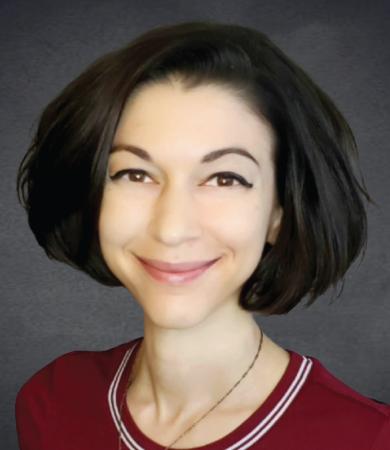Government Relations
Inside Grants: National Institutes of Health High-Risk, High-Reward Research Program

The National Institutes of Health (NIH), part of the U.S. Department of Health and Human Services, is one of the premier funders of medical and health research. Its High-Risk, High-Reward program supports creative researchers pursuing highly innovative research with broad impact. Projects are supported in NIH’s priority areas of biomedical, behavioral, and social science fields.
Jessica Schleider completed her PhD at Harvard University, where she was trained as a clinical child and adolescent psychologist. After completing a 1-year clinical internship at Yale Medical School, she began as a tenure-track assistant professor of psychology at Stony Brook University. Here she founded and directs the Lab for Scalable Mental Health (schleiderlab.org). Schleider is beginning her fourth year in this position.
Grant Information
- Country/Region: United States
- Organization: National Institutes of Health
- Grant Mechanism: High-Risk, High-Reward Research Program
- Amount: Covers up to $250,000 in direct costs per year for up to 5 years
Her current NIH funding is through the Office of the Director’s High-Risk, High-Reward Research Program via a 5-year Early Independence Award (DP5). Her main project is titled “Harnessing Network Science to Personalize Scalable Interventions for Adolescent Depression.” Through the Early Independence Award, she was also able to secure a COVID-19 Competitive Revision Award for a supplementary project titled “Testing Scalable, Single-Session Interventions for Adolescent Depression in the Context of COVID-19.”

Jessica Schleider
What are you researching?
The overall goal of my research program is to address the longstanding discrepancy between high need for youth mental health care and low access to evidence-based treatment. My lab team and I develop brief, accessible interventions for youth mental health problems, with a focus on single-session interventions (SSIs). We explore how and for whom these brief interventions work best and test novel approaches to dissemination. We are actively testing a suite of digital and provider-delivered SSIs, which address interconnected targets: youth cognitions, such as beliefs about personal traits that are malleable (vs. fixed) and perceptions of agency and self-efficacy, and family processes, such as caregivers’ expectancies for psychotherapy and adaptive parenting behaviors. Our long-term goal is to harness these targets to build and test brief, effective interventions to mitigate the individual, familial, and societal burden of youth mental health problems.
One set of results I’m excited to share are those of our largest-yet randomized trial of digital, self-guided SSIs for adolescent depression. In light of rapidly expanding youth mental health needs during the COVID-19 pandemic, I secured an NIH COVID-19 Competitive Revision Award (linked to my DP5 grant) to test the effects of two of our SSIs: Project Personality, which teaches growth mindset (that symptoms and traits are malleable), and the ABC Project, which teaches behavioral activation (that values-based actions can improve mood). We studied 2,452 high-symptom adolescents during the pandemic (50% youth of color; 80% sexual/gender minority youth). We found that both online SSIs led to significant decreases in adolescent depression across 3 months (ds = 0.18) compared with an active, supportive placebo SSI. Further, both SSIs improved post-intervention hope and agency, supporting the notion that these SSIs effect change by instilling perceptions of control and efficacy. An invited revision of the manuscript reporting trial results is under review, and our preprint is available at psyarxiv.com/ved4p/.
In terms of ongoing NIH-funded work to enhance the precision of SSIs, through my Early Independence Award project, which is ongoing through 2024, we are exploring whether within-person symptom patterns (which we are building from experience-sampling data) predict differential response to SSIs that target distinct symptoms of adolescent depression. For instance, youth for whom behavioral symptoms (e.g., activity withdrawal) are central within their symptom networks may respond best to an SSI designed to increase positive activity engagement. By comparison, youth for whom cognitive symptoms (e.g., hopelessness) are central might respond best to an SSI designed to strengthen self-efficacy and hope. Results may yield a means of matching youth to individually optimized SSIs—which would be quite helpful, given the literally hundreds of ways in which adolescent depression can present!—and the trial will have the longest follow-up of any SSI randomized controlled trial to date (2 years).
How has NIH funding supported your research efforts?
Receiving an Early Independence Award has totally transformed the speed and scope of the research my lab can conduct. Receiving R01-equivalent funding in 2019, a year into my faculty position, allowed me to hire full-time postbaccalaureate and postdoctoral staff, better support my graduate students, and pursue large-scale randomized clinical trials of new, promising interventions I had designed. It would have been very challenging, if not impossible, to fund projects of this scope and size without Early Independence Award funding—and traditional funding mechanisms likely wouldn’t have supported the project given the experimental nature of the ideas we’re exploring (i.e., using individualized symptom networks to predict response to different single-session mental health programs). I suppose that’s exactly the point of the award, though—to fund “high-risk, high-reward” research that likely wouldn’t be fundable through other channels. I’m extremely grateful for the opportunities this grant has provided to catalyze my career and to grow and fully support my research team and trainees.
What was the grant application process like for the High-Risk, High-Reward Program?
The application was long, complicated, and unusual for NIH grants (but entirely worth it in the end!). The Early Independence Award must be submitted before an applicant enters a full-time, tenure-track academic position. As a result, I wrote my application while working as a full-time clinician at Yale School of Medicine (i.e., during my clinical internship year), in between receiving a job offer from Stony Brook and my official start date as an assistant professor. I spent nights and weekends for about 4 months preparing the application, the format of which was unlike other NIH grants I’d worked on. Specifically, about half of the grant involves arguing why you are prepared to “skip postdoc” and make the most out of R01-level funding at an earlier-than-usual career stage; the other half goes toward describing your project, the ways in which it is innovative, and how it could potentially lead to major discoveries in your area of research. In addition to these sections, I also needed to obtain 10 to 15 letters of support from Stony Brook faculty and administrators, in order to demonstrate my future institution’s commitment to support me and my work. So, it was a lot of organizing, reaching out to future colleagues I hadn’t yet met, and forcing myself to “dream big” in terms of the science I thought would be most impactful in my area.
What have you been able to do with High-Risk, High-Reward funding that you don’t think you’d be able to do with a more traditional grant mechanism?
The premise of my lab’s work, that SSIs can meaningfully reduce mental health problems, is unusual and somewhat new in and of itself within clinical psychology. Combining SSI research with network science to predict individual-level intervention response is not something I’ve seen written about at all! I would have needed considerably more pilot data, which would have taken me years and many small-scale grants to collect, to have any chance at securing funding for my idea through traditional R-series mechanisms. I am extremely grateful that the NIH took a chance on me and my ideas, allowing me to pursue them infinitely more efficiently and effectively than I otherwise could have.
What advice do you have for researchers applying for grants from NIH?
First, I’d suggest gathering as many examples as possible of successful NIH grants written by others, ideally from scientists who use methods similar to yours. This has been the single most helpful step I’ve taken in preparing NIH grants. Second, I always think it’s valuable to seek informal feedback on your Specific Aims and Research Plan documents from colleagues in fields outside your own. If a fellow researcher without content expertise in your subfield can immediately grasp your project’s design, importance, and public health value, you can rest assured that you’ve done a good job communicating your ideas.
Find more information on the NIH High-Risk, High-Reward website.





APS regularly opens certain online articles for discussion on our website. Effective February 2021, you must be a logged-in APS member to post comments. By posting a comment, you agree to our Community Guidelines and the display of your profile information, including your name and affiliation. Any opinions, findings, conclusions, or recommendations present in article comments are those of the writers and do not necessarily reflect the views of APS or the article’s author. For more information, please see our Community Guidelines.
Please login with your APS account to comment.